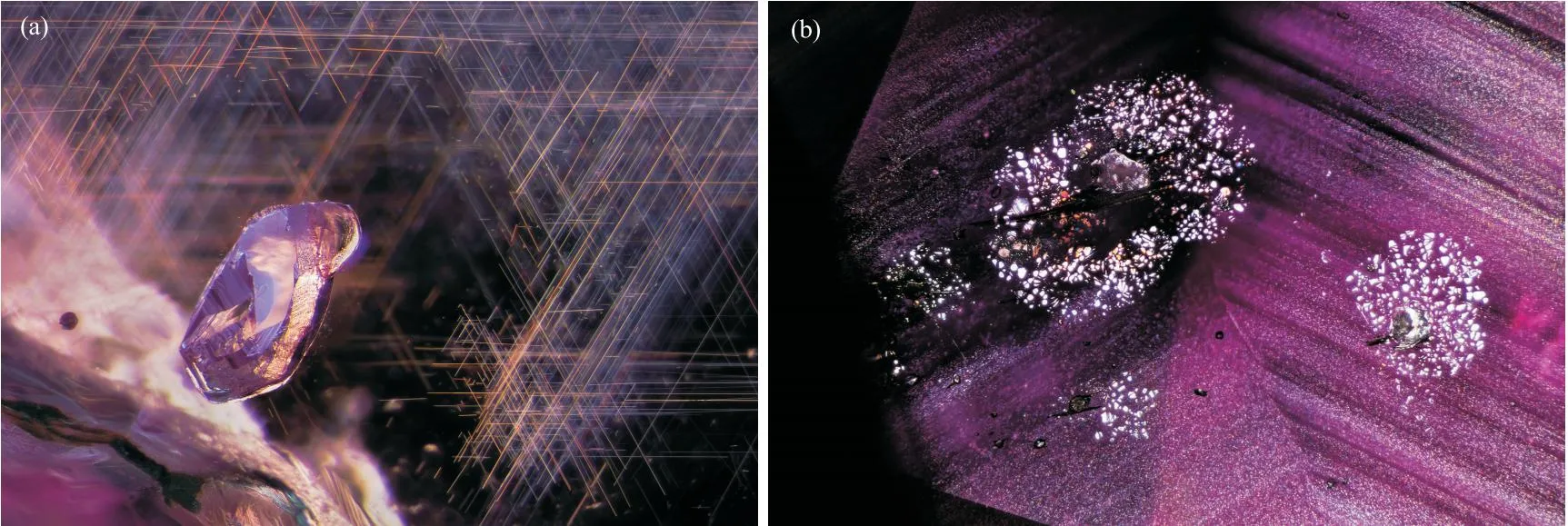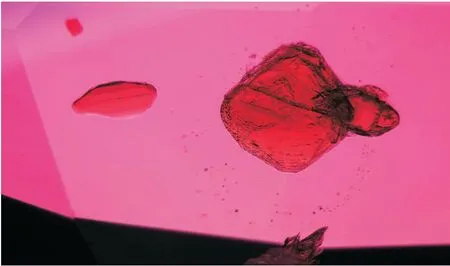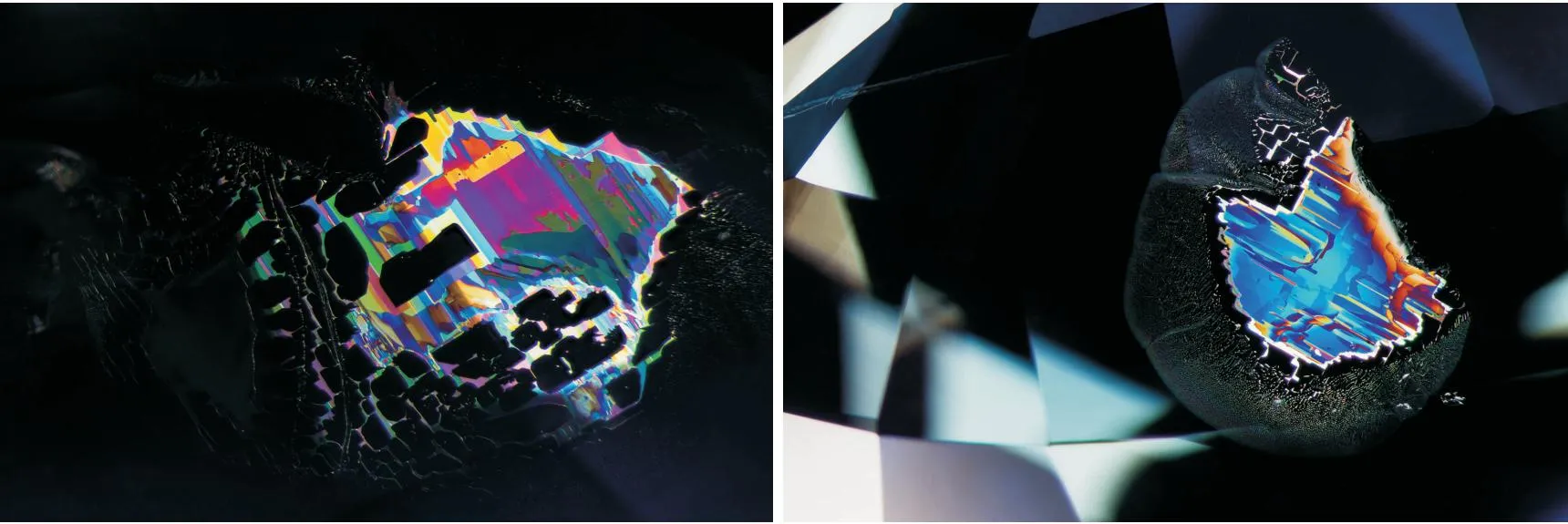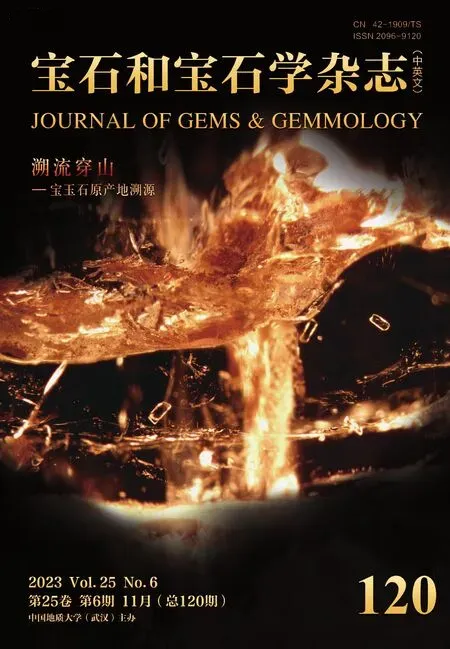How to Hyperion
E.Billie Hughes
(Lotus Gemology Co. Ltd.,Bangkok 10500,Thailand)
INTRODUCTION
It is said that necessity is the mother of invention.When this author was contacted about sharing an article that could help gemologists learn more about origin determination,it seemed like a perfect opportunity to provide information about our own laboratory’s invention,Hyperion.This is a tool we crafted to meet our own necessity,particularly as we faced the challenge of origin determination.
Working at Lotus Gemology,a Bangkok-based laboratory that focuses on identification,treatment detection,and origin determination of colored gemstones,we are well-placed to share our experience with this issue.As many gemologists know,origin determination does not have black and white answers (perhaps fittingly,as we test colored stones).There can be considerable overlap in features between stones of different origins.To further complicate the issue,each time a new deposit is discovered,further study is needed to separate stones from the new deposit from others.
As with all gemstone testing,we encourage gemologists to gather many types of evidence before drawing a conclusion.Much of our work with origin determination involves a process of elimination.Each piece of data can provide important information.Sometimes this evidence hints at where a stone is from; other times it can tell us where the stone is not from,which is equally important.
BACKGROUND
My personal journey into the field of origin determination started at an early age,because my parents are both gemologists.They took me to my first sapphire mine in Thailand at the age of two to collect samples.Since then,I have been fortunate to visit most of the world’s major ruby and sapphire deposits.In 2013,I completed the Gem-A’s FGA course,and in 2014 my family started our lab,Lotus Gemology.
Much of what we learned in class had focused on the identification and separation of different types of gems.As we started receiving submissions at the lab,I was keen to put the new gemology skills I had learned to work.However,I was surprised to realize the majority of our clients were already able to separate most of their stones by type; what they needed more help with was treatment detection and origin determination.Despite the demand,there are few classes one can take to learn these distinctions.One of the reasons is because with new treatments and origins emerging,there is always a need to do more research to stay up to date.
Between testing clients’ stones as well as having access to our laboratory’s sample collection,I had a wonderful opportunity to learn more about the stones.But with the volume of stones we were seeing,it became difficult to keep track of everything I was learning and remember what features belonged to which stones.At one point,I asked my father with some frustration,“How can you know that one ruby is from Burma (Myanmar) and that another is from Mozambique?” He replied,“When you’ve been looking at rubies for over 30 years,you know.” His point was that it takes a great deal of experience.
ENTER HYPERION
To gain more experience,I knew I would have to study the subject further.When we are studying,we often take notes to help retain information.But how do you take notes in the microscope? I began to take photos of everything I was seeing,along with note on each image describing the stone and inclusion scene.These could be kept in a folder on the computer,and when I was stuck I was able to do searches through the folder to find what I was looking for.It was not a sophisticated system,but for a budding gemologist,it was helpful.
Once my parents saw how I had organized this folder of inclusions,they encouraged me to take it a step further,and create a more robust database.Instead of just searching by key words,we decided it would be helpful to also search by stone type,treatment,and origin.We thought that if it was helping us in our lab,it could help other gemologists too.That is when we decided to put it up online,free of charge and open to the public.We named the system Hyperion,in honor of the Greek god of light.
HOW-TO
There are many ways to effectively use Hyperion.
One of the easiest is to simply click the “search” button without adjusting any other parameters.This allows users to see all images in the system at once.Clicking on an image will bring up a larger image.This includes a caption,description of the stone and treatment and origin if known.Lighting conditions and field of view are also included.Most entries also have one or more references where viewers can learn more (see Inclusions in Gemstones:Hyperion Literature Sources).
Where Hyperion becomes powerful is when comparing and contrasting different types of inclusion images.A user could pull up two different windows to compare heated vs.unheated sapphires,for example.One could also compare stones from two or more origins,like Burmese vs.Mozambique ruby.Synthetics and imitations like glass are also a part of the system.
Users can also type a keyword in the search box and do a search that way.For example,typing in “garnet” will yield both inclusions in garnet and garnet inclusions in other gems.
It is also possible to select more than one search parameter at a time.For instance,unheated Burmese rubies can be compared to heated Burmese rubies.
There is also a page on our website called Gem Inclusion Paris:Hyperion Siamese Twins where a selection of images have been paired and/or grouped to show a relationship between them.
It is by seeing several images at once that we can compare and contrast results and learn more about stones.
CASE STUDIES
The following are a few interesting case studies.
MicainRuby
In this example,there are mica crystals in two inclusion scenes.In untreated rubies from both Burma and Mozambique,mica can be found.This means the presence of mica alone does not help to distinguish between rubies of these two origins.However,that does not mean these two inclusion scenes cannot be useful for origin determination.Note that the mica crystal in the Burmese ruby is surrounded by a clear area,and then ensconced by a cloud of rutile silk needles.In the Mozambique ruby,the mica crystals are surrounded by iridescent “rosette” type platelets.There is also “silk” in the background,but in the Mozambique ruby it is in small platelets (Fig.1).

Fig.1 (a) A mica crystal in a ruby from Mogok,Burma.Note that it is surrounded by a cloud of rutile silk in fine,elongated needles.(b) A cluster of mica crystals in a ruby from Mozambique.Note that these mica crystals often have iridescent “rosette” inclusions surrounding them.Also,the silk in the background is distinct from the rutile silk needles seen in the Burmese ruby.In this stone,the silk is in tiny zoned platelets.(Images by E.Billie Hughes)
StauroliteinRuby
One rare inclusion image in our database is staurolite in ruby.Thus far,staurolite has only been reported in rubies from East Africa.Hyperion contains images of staurolite in ruby from Madagas-car and Tanzania.A user can infer that if they find a staurolite inclusion,the ruby they are studying could hail from an East African source.This can help eliminate other possibilities,such as Burma or Vietnam (Fig.2).

Fig.2 Red staurolite crystals,identified by micro Raman,are present in this ruby from Tanzania.Thus far,staurolite inclusions have only been reported in rubies from East African origins.While it may not help separate a Tanzanian ruby from a Madagascar ruby,the presence of a staurolite crystal would indicate a ruby is unlikely to be from other regions like Burma or Vietnam.(Image by E.Billie Hughes)
IridescentRectilinearFingerprintsinSapphirefromSriLanka
In this case,users searching through unheated sapphires from Sri Lanka may notice that some features appear repeatedly.One is iridescent rectilinear fingerprints.By noticing patterns in stones from certain origins,we can better identify them.Users should note,however,that just because a feature is seen a stone from one origin does not mean it cannot be found in another origin(Fig.3).

Fig.3 Looking at many photomicrographs can help users recognize patterns.Here,two similar iridescent rectilinear fingerprints can be seen in untreated sapphires from Sri Lanka.The ability to help us recognize patterns is part of what makes Hyperion a powerful tool.(Images by E.Billie Hughes)
DolomiteinSpinel
In both photomicrographs of spinels pictured here,Raman spectroscopy identified the solid inclusions as dolomite.Thus,the presence of a dolomite crystal would not separate stones from the two origins.However,other features may help.The Vietnamese spinel also contains dislocation needles,while the Tanzanian spinel,features dust-like particles.These features are typical for these two origins,respectively (Fig.4).

Fig.4 (a) Dolomite inclusion in a spinel from Vietnam.(b) Dolomite inclusion in a spinel from Tanzania.Both of these images contain dolomite crystals,which were identified with Raman spectroscopy.This suggests that the presence of a dolomite crystal alone is not enough to separate spinels from Vietnam and Tanzania.However,a closer look does reveal some differences.The Vietnamese spinel contains dislocation needles which are typical for this material,while the spinel from Tanzania contains dust-like particles often found in spinel from Mahenge,Tanzania.It is in comparing and contrasting these inclusions that we learn.(Images by E.Billie Hughes)
RECENT UPDATES
Since we started Hyperion,we have continued to update it as we take new images.When it premiered,the database contained a couple hundred images.To date,we have now uploaded more than 1 600 images and counting.There have been a couple notable additions to the system.
First,in many of our newer images,we have identified solid inclusions with micro Raman.This helps us confirm their identity with a much higher degree of certainty.Captions state when an inclusion has been identified with Raman spectroscopy.
Furthermore,in the last few years we have expanded the types of gemstones we test.Initially Hyperion(www.lotusgemology.com) only contained inclusions in corundum and spinel.While ruby and sapphire are still the most represented type of gem,many others have been added.Now users can view inclusions in quartz,garnet,beryl,jade,and more.
CONCLUSION
Next time a question arises about the treatment or origin of a stone,our readers should consider browsing Hyperion to see if it can shed light on the issue.We hope that our invention will meet your necessity as much as it has helped ours.

